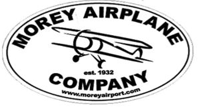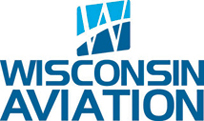by Richard Morey
© Copyright 2023. All rights reserved!
Published in Midwest Flyer Magazine December 2023 Digital Issue
I have been flying a long time. I do not look at this as an accomplishment, but rather as a side effect of being born into an aviation family, catching the flying bug, and then stubbornly pursuing my dream of operating the family flight school. Emphasis on stubborn. When I started logging time back in 1974, all the training aircraft had carburetors and most of the Cessnas I was training in had Continental engines.
My flight instruction took place in Cessna 150s. Their Continental 0-200 engines were very prone to carburetor ice. Those of you who learned on similar equipment will remember religiously applying carburetor heat whenever the throttle was reduced below normal operating range, that is Rotations Per Minute (RPM), were less than the green arc range on the tachometer.
My First Encounter
My first real encounter with carburetor ice occurred in the spring of 1974. I was a student pilot. My father, Field Morey, and I were returning from Madison in a Cessna 150. The temperature was in the 40’s with low ceilings and rain. The strong winds out of the east indicated a low-pressure area south of us. We always referred to this pattern as a “snow wind.” Perfect conditions for carburetor ice to form.
As we approached our airport from the east, I noticed that I was 100 feet below our pattern altitude. Looking at the tachometer I noted that the RPM was less than I had set for cruise. I pointed this out to dad and wondered aloud if the throttle had slipped? I should have suspected something when he just smiled. I added power and climbed back to pattern altitude. As I entered the downwind leg to Runway 12 at Morey Airport (C29), I noticed that I was 100 feet low again and that the RPM was again lower than I had set. I pointed this out to dad again, and this time, in good flight instructor fashion, he asked, “What could be causing this?” The lightbulb came on as I realized that it was probably carburetor ice.
My hand was a blur as I reached for the carburetor heat control and yanked it into the on position. This resulted in the engine running very rough, then quitting altogether! This had my full attention! Dad immediately stated, “My airplane” and turned towards the airport. This lined us up with our turf Runway 18. About this time, the engine came back to life. “Your airplane,” said dad, and I reentered downwind for Runway 12. I landed without incident, but with a better appreciation for the perils of carburetor ice! Lessons like that stay with you for life.
Why does carburetor ice form?
Air gets to the carburetor, either from being drawn through the air filter, or from a shroud surrounding an exhaust pipe. The source of air is determined by the position of a valve in the carburetor air box. With carburetor heat OFF, the valve allows air from the air filter to be drawn into the carburetor. When the carburetor heat control is in the ON position, the valve closes the airway from the filter and opens the airway from the carburetor heat shroud.
Air from the filter is at the surrounding air temperature. Air from the carburetor heat shroud is not filtered and is heated by the exhaust pipe. As air is drawn through the carburetor on its way to the cylinders, the air is cooled by two processes – pressure drop and evaporative cooling.
The pressure drop (low pressure) is created by pulling the intake air through a restriction in the carburetor called a “venturi.” Air moving through a venturi increases in velocity which decreases the pressure. A drop in air pressure reduces the air temperature. The low-pressure area draws fuel from the carburetor fuel bowl through the carburetor’s nozzle and into the intake airstream. The fuel nozzle is located at the point of lowest pressure inside the venture. The second cooling process takes place when the fuel, which has been drawn into the low-pressure area, is vaporized. It takes energy, in the form of heat, to change a liquid to a gas.
If you have ever been swimming on a windy day, you have experienced evaporative cooling. When you climb out of the water, you will feel far colder than the temperature would indicate. This is because the water on your body is being evaporated by the wind and your body heat.
Ice Formation
If there is relatively high humidity in the atmosphere, and the temperature is between 20 and 70 degrees Fahrenheit, it is possible that the temperature of the air passing through the carburetor will drop below freezing. This could result in carburetor ice. The freezing water vapor will collect on the venturi surface and the carburetor valve. Ice buildup on these areas restricts the flow of air into the engine, which results in a loss of power, much like reducing the throttle. Applying carburetor heat moves the air box valve closing the intake air from the air filter (cold air) and opening the intake from the carburetor heat shroud (hot air). This heated air will melt any ice formed in the carburetor. Since heated air is less dense than colder air, the heated intake air has less oxygen per volume to burn.
Applying carburetor heat will result in a loss of power created by the engine, resulting in a loss of RPM. Less oxygen per volume of air also results in enrichening the mixture. The amount of fuel going into the engine remains the same while the amount of oxygen is reduced. During normal engine runup, the over-rich fuel air mixture caused by applying carburetor heat will cause the engine RPMs to drop.
History
Bear with me for a moment as I recount some relevant aviation history.
In the post-World War II era, Piper used Lycoming engines almost exclusively and Cessna used Continental engines. Cessna switched the C172 from the Continental 0-300 engine to Lycoming 0-320s in 1968. My understanding is that Continental was having labor problems and could not reliably supply Cessna with the engines it needed. In 1977, Cessna redesigned the C150, switching to a Lycoming 0-235 engine and reducing flap range from 40 degrees in the C150 to 30 degrees in the C152. Both of these modifications made sense from Cessna’s perspective. Limiting the flaps to 30 degrees made it far more likely that a student pilot could execute a go-around successfully with flaps stuck at full. Switching to the Lycoming engine made carburetor ice far less likely (I will go into the reason for this later in the article).
In 1986, Cessna officially ceased manufacturing single-engine piston aircraft at least in part because of outdated manufacturer’s liability laws. By 1996, Congress addressed Cessna’s concerns and passed the General Aviation Revitalization Act (GARA). GARA limited the liability of aircraft manufacturers for General Aviation aircraft to 18 years. No longer was Cessna legally liable in infinitum because old aircraft were not built to modern standards. Cessna re-started the single-engine production line, beginning with C172s. These new C172s, and later C182s and C206s, have Lycoming fuel-injected engines. The choice of fuel-injected engines was undoubtedly based on avoiding carburetor ice and the resulting potential liability. Fuel-injected engines are not subject to carburetor ice.
There is not enough temperature drop generated in the venturi alone to cause ice to form in the fuel injector’s throttle body. What this means is that pilots who have trained in Lycoming-powered aircraft, especially fuel-injected aircraft, have no real experience with carburetor ice. Carburetor ice can form in Lycoming engines, but it is far less likely to do so.
Continental versus Lycoming carburetor placement.
Lycoming mounts their carburetors under the oil pan of their engines. Continental mounts their carburetors on the intake manifolds of their engines. This results in the Lycoming carburetors being heated by the engine oil pan and the Continental carburetors being cooled, literally by hanging in the breeze. Lycoming engines are made in Williamsport, Pennsylvania… Continental engines are made in Mobile, Alabama. I speculate that the average temperatures of Lycoming’s and Continental’s locations may have had something to do with why the two manufacturers chose different carburetor locations.
The training fleet in the United States is almost exclusively made up of either Lycoming-carbureted or Lycoming fuel-injected engine powered aircraft. As an example, my flight school has two C152s, three carbureted C172s, and three fuel-injected C172s. All have Lycoming engines. The aviation universities are almost all using aircraft powered by Lycoming fuel-injected engines. Many of the big flight schools and universities hire their graduates as flight instructors. So now not only do the students not have actual experience with carburetor ice, or even carbureted engines, but their instructors do not have that experience.
Why does Piper recommend NOT using carburetor heat during normal operations?
Cessna’s air filters and intakes are mounted on the aircraft cowling. The temperature of this intake air is whatever the surrounding air temperature is. Modern Pipers have their air filters and intakes in the engine compartment on the back baffle. The intake air on Pipers is heated by flowing over the cylinders. As a result, a Cherokee’s normal operating range, or green arc on the tachometer, may go as low as 500 RPM. A Cessna’s low end of normal operating range is generally about 2100 RPM. When operating outside of the normal operating range, or below the green arc, Cessna requires carburetor heat to be on. On the Cherokee, the Piper manual says only to operate carburetor heat if the engine is running rough.
Textbook versus Reality
In reviewing the FAA knowledge test questions on carburetor ice, I find a disconnect between what is taught and what actually happens. The FAA answer to what is the first sign of carburetor ice in a fixed-pitch propeller powered aircraft is technically correct, but in practice it is wrong. The FAA answer is that the first sign of carburetor ice is loss of RPM. The reality is pilots will notice the result of lower RPM before they notice the RPM loss. Lower RPM results in loss of altitude. As in my first encounter with carburetor ice, the pilot will notice the loss of altitude first, then notice that the RPM has decreased. Loss of altitude is not a choice on the knowledge test questions, but it is a very useful in practice.
The second question which is technically accurate, but practically misleading, is the FAA answer to “what happens when you apply carburetor heat if there is carburetor ice?” The FAA’s answer is that the RPM will decrease when you apply carburetor heat, then increase, and increase further when you take off carburetor heat. What is not mentioned is that you should expect the engine to not only lose power, but to run rough when carburetor heat is applied during carburetor icing.
Pilots, and even flight instructors, who only have book knowledge of carburetor ice, have crashed aircraft unnecessarily because they did not expect the engine to run rough. The engine runs rough as the ice melts and water goes through the engine. This has resulted in inexperienced pilots turning the carburetor heat back off in a vain attempt to solve the roughness. Turning carburetor heat off during carburetor icing will result in the carburetor continuing to ice up, possibly to the point that the engine ether dies or loses enough power to no longer sustain flight.
The correct procedure to remedy carburetor ice is to turn the carburetor heat on and leave it on. You will know that there was carburetor ice if, as the FAA says, the engine RPMs are reduced (with possible roughness associated), then the engine smooths out and RPMs increase.
Pilots experiencing carburetor ice should consider landing as soon as possible. If this is not possible and you need to operate with carburetor heat on, then lean the mixture. You should get a slight rise in RPM as you lean. Remember, heated air is less dense. Applying carburetor heat will enrichen the air fuel mixture of the intake air going into the engine. By leaning an engine with carburetor heat on, an increase in performance should result.
In summary, unless you have experience flying Continental-powered, carbureted engines, you probably have not experienced carburetor ice.
The textbook answers on what to expect during carburetor ice are technically correct, but do not mention the engine roughness that will often occur as the ice in the carburetor melts and passes through the engine. Cessnas and Pipers have different air intake locations, and because of this, they have different carburetor heat techniques.
Lycoming mounts their carburetors on the oil pan… Continental on the intake manifold, making it far more likely that carburetor ice will form. If you are lucky enough to be flying an older Cessna, be it a C150, a pre-1968 C172, a carbureted C182 or C206, be aware of the likelihood of carburetor ice forming.
Older Continental-powered aircraft are a delight to fly! Knowing that carburetor ice is not only possible, but likely, and knowing how to deal with the inevitable carburetor icing, makes flying them safe and far more pleasurable!
EDITOR’S NOTE: Richard Morey was born into an aviation family. He is the third generation to operate the family FBO and flight school, Morey Airplane Company at Middleton Municipal Airport – Morey Field (C29). Among Richard’s diverse roles include charter pilot, flight instructor, and airport manager. He holds an ATP, CFII, MEII, and is an Airframe and Powerplant Mechanic (A&P) with Inspection Authorization (IA). Richard has been an active flight instructor since 1991 with over 15,000 hours instructing, and more than 20,000 hours total time. Of his many roles, flight instruction is by far his favorite! Comments are welcomed via email at Rich@moreyairport.com or by telephone at 608-836-1711. (www.MoreyAirport.com).
DISCLAIMER: The information contained in this column is the expressed opinion of the author only. Readers are advised to seek the advice of their personal flight instructor, aircraft technician, and others, and refer to the Federal Aviation Regulations, FAA Aeronautical Information Manual, and instructional materials concerning any procedures discussed herein.
















